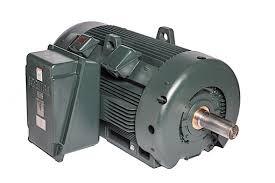Medium Voltage Motor Market Pain Points Hindering Global Industrial Equipment Expansion
The medium voltage motor market plays a vital role in powering industrial operations across sectors like oil & gas, power generation, mining, manufacturing, and water treatment. These motors, operating typically between 1 kV and 6.6 kV, are crucial for high-torque, continuous-duty applications in heavy industries. However, despite their critical importance, the market faces multiple pain points that hinder widespread adoption, delay project timelines, and challenge manufacturers' profitability.

Key Pain Points in the Medium Voltage Motor Market
1. High Initial Capital Investment
One of the primary barriers to the adoption of medium voltage motors is their high upfront cost. These motors are complex, robust machines designed for demanding applications, requiring significant investment in terms of purchase price, installation, and commissioning. For small and mid-sized enterprises (SMEs) or companies operating with tight budgets, the initial capital outlay often limits their ability to transition to medium voltage motor systems, despite the long-term efficiency and performance benefits.
Moreover, when advanced features like variable frequency drives (VFDs), smart monitoring systems, or energy-efficient designs are incorporated, the price rises even further, creating a significant hurdle for many end-users.
2. Complex Installation and Commissioning Process
The installation of medium voltage motors involves intricate engineering, specialized equipment, and skilled technicians. Unlike low-voltage systems, medium voltage motors require stringent safety protocols, precise alignment, and integration with power distribution systems. Any installation error can result in system inefficiencies, operational risks, or premature equipment failure.
Industries, particularly in developing regions, often face a shortage of skilled labor capable of handling the complexities of medium voltage motor deployment. This contributes to extended project timelines, higher installation costs, and increased operational risks.
3. Maintenance and Downtime Challenges
While medium voltage motors are designed for durability, they require regular maintenance to ensure optimal performance, especially in harsh industrial environments like mining, petrochemical plants, or water treatment facilities. Scheduled maintenance involves motor disassembly, inspections, part replacements, and system testing, all of which require specialized expertise and can lead to operational downtime.
Unplanned motor failures can result in substantial productivity losses, particularly in industries that rely on continuous operations. In many regions, access to spare parts and qualified service providers remains a pain point, exacerbating downtime and operational inefficiencies.
4. Supply Chain Vulnerabilities
The global medium voltage motor market is highly dependent on raw materials such as copper, steel, and specialized insulation materials. Fluctuations in the prices and availability of these materials, driven by geopolitical tensions, trade restrictions, or global crises, significantly impact production costs and delivery timelines.
Additionally, many motor components, including electronic control units, rely on complex international supply chains. Recent disruptions, such as the global semiconductor shortage and logistics bottlenecks, have exposed vulnerabilities in the supply network, causing delivery delays and increased costs for manufacturers and end-users alike.
5. Regulatory and Compliance Complexities
The global shift toward energy efficiency and environmental sustainability has introduced new regulatory challenges for the medium voltage motor market. Many countries have adopted stringent standards that mandate higher efficiency ratings, lower emissions, and reduced energy consumption for industrial equipment.
While these regulations drive innovation, they also present pain points for manufacturers who must continuously invest in research and development to comply. Smaller players in the market often struggle to meet evolving compliance requirements, limiting their ability to compete.
6. Technological Transition Barriers
The rapid evolution of motor technologies, particularly the integration of smart monitoring systems, IoT-enabled features, and predictive maintenance tools, creates a technological gap for many end-users. Industries accustomed to conventional motor systems often face challenges in adopting and managing advanced motor technologies.
The cost of transitioning existing infrastructure to accommodate smart motor systems, coupled with a shortage of skilled personnel familiar with new technologies, can slow market adoption and limit potential efficiency gains.
Outlook and Opportunities Amid Market Pain Points
Despite these challenges, the long-term outlook for the medium voltage motor market remains positive, with growth opportunities driven by industrial automation, renewable energy projects, and global infrastructure development. Addressing market pain points will require:
-
Enhanced training programs to develop a skilled workforce for installation and maintenance
-
Diversification of supply chains to mitigate material shortages and delivery risks
-
Investment in cost-effective, high-efficiency motor technologies
-
Partnerships between manufacturers and end-users to simplify the transition to smart motor systems
By tackling these barriers head-on, the industry can unlock the full potential of medium voltage motors and support global efforts toward energy efficiency, operational reliability, and sustainable industrial growth.
- Art
- Causes
- Crafts
- Dance
- Drinks
- Film
- Fitness
- Food
- Games
- Gardening
- Health
- Home
- Literature
- Music
- Networking
- Other
- Party
- Religion
- Shopping
- Sports
- Theater
- Wellness


